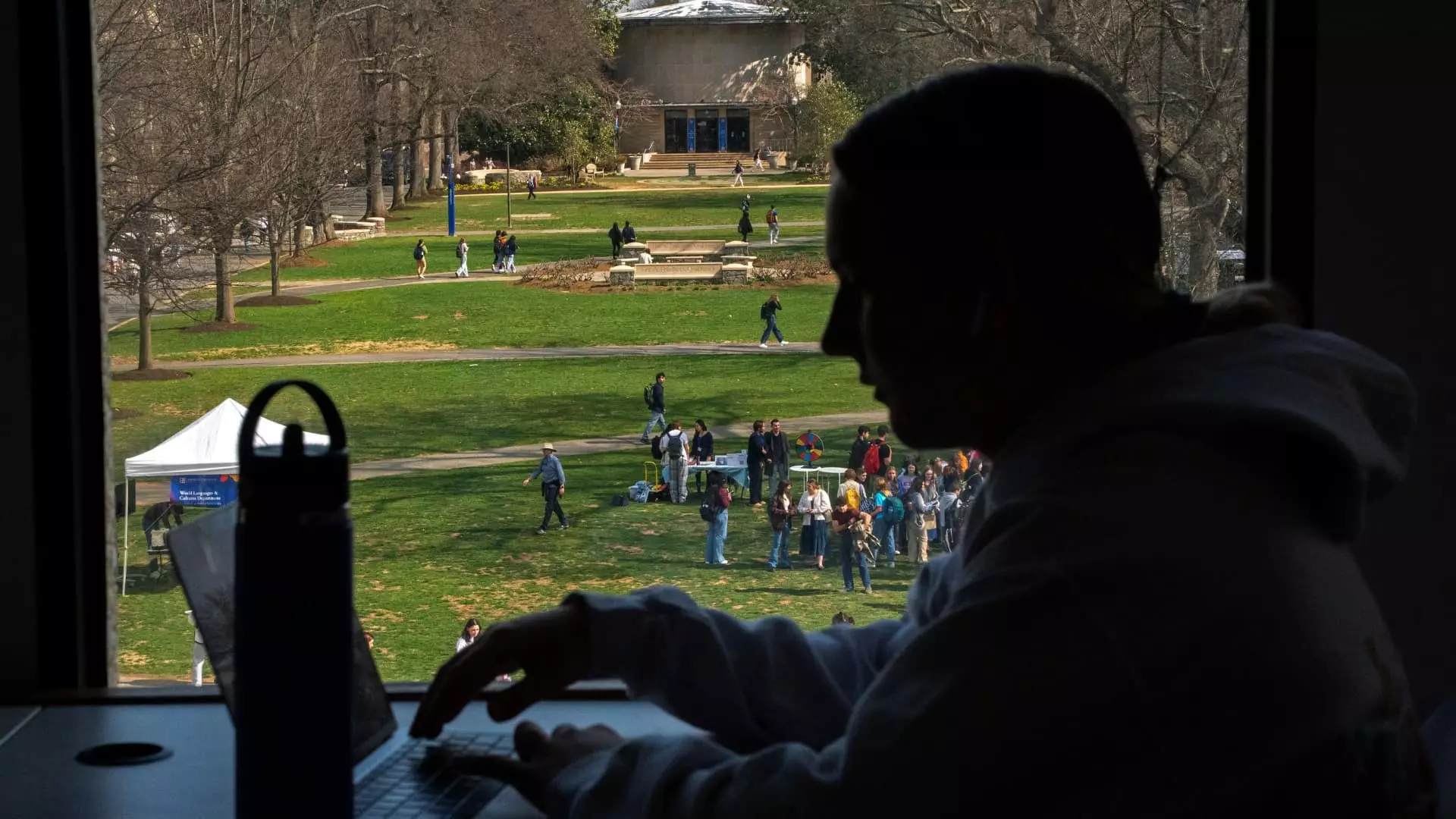The specter of financial ruin hangs ominously over the more than nine million student loan borrowers who are predicted to default on their payments come the early months of 2025. According to a grave warning from the Federal Reserve Bank of New York, the consequences of missed payments will not merely result in forgotten reminders. They will carve a deep scar on the credit scores of borrowers, some plummeting as much as 171 points. For a demographic already grappling with substantial student debt, this forthcoming reality raises serious alarms, reminiscent of the financial tumult that has historically plagued those in higher education debt.
Credit scores, which dictate financial viability, will become ever more pivotal in the lives of these borrowers. The spectrum runs from 300 to 850, with a score above 670 generally considered a marker of “good” credit. The impending delinquencies are particularly punishing for individuals who currently possess better scores. For those trailing at the bottom, with scores under 620, the average decline due to new delinquencies is predicted to be around 87 points. In times when financial stability is paramount, these anticipated drops send shockwaves through the financial landscape, turning optimism into despair.
Delinquency Nightmare Following a Pandemic Respite
What aggravates this situation is the long hiatus from payment obligations that many student loan borrowers experienced during the pandemic. The freeze on collection activities was a temporary respite, allowing borrowers to breathe a little easier. However, this grace period has come to a close, with the Federal freeze ending officially on September 30, 2024. As the market recalibrates and the fallout from delinquencies becomes visible on credit reports once more, the new reality is starting to dawn on borrowers. Doug Boneparth, a certified financial planner, warns that the repercussions extend far beyond mere credit points. The erosion of credit standing fosters a cycle of elevated borrowing costs, thus exacerbating the financial mire for those affected.
As these adverse credit developments unfold, borrowers face the threat of wage garnishment and the potential seizure of retirement benefits for their previous defaults. It paints a brutal picture of what lies ahead for thousands. No longer is the struggle to manage student debt simply a personal issue; it has implications that ripple across the economy and contribute to broader societal problems. This is not just a matter of individual accountability; it’s a systemic failure that necessitates action from policymakers and financial institutions alike.
Finding Solutions Amidst the Chaos
Yet, not all is lost in this tumultuous wave battering student loan borrowers. Consumer advocates have tirelessly worked to provide avenues that can mitigate the impending credit storm. Affordable repayment plans are emerging as essential tools for those struggling to meet their financial obligations. These measures, especially income-driven repayment plans, provide a lifeline for individuals, potentially capping payments at a manageable percentage of discretionary income—or even leading to a scenario where the monthly payment equals zero.
The Education Department has taken steps to address these impending challenges, reopening avenues for borrowers to apply for critical income-driven repayment plans after a lengthy availability hiatus. These plans can pause loan payments for a defined period, clearing borrowers from delinquency status while preserving their credit standing.
For those already flailing in the depths of default, options such as loan rehabilitation or consolidation exist, though navigating these processes can be daunting. Rehabilitation requires commitment, as borrowers must make “nine voluntary, reasonable, and affordable monthly payments.” The consolidation route also presents an outlet, allowing borrowers to package their debts into a new loan after fulfilling certain initial payment criteria.
The Road Ahead: Monitoring and Adapting
Additionally, the onus is on borrowers to stay vigilant in maintaining their credit health. Regular check-ins on credit reports can help ensure that payment statuses are accurately reflected and that any discrepancies are addressed promptly. Using resources like AnnualCreditReport.com allows borrowers the opportunity for transparency and enables better financial planning.
While these solutions offer hope amidst the chaotic fallout of student loan debt, the path forward truly rests with collective recognition of the systemic issues at play. Policymakers need to take heed of the warnings from within the financial institutions and prioritize reform that addresses the underlying causes of student debt, rather than temporary fixes. As we hurtle toward a potentially debilitating financial cliff, the time for action is now.

